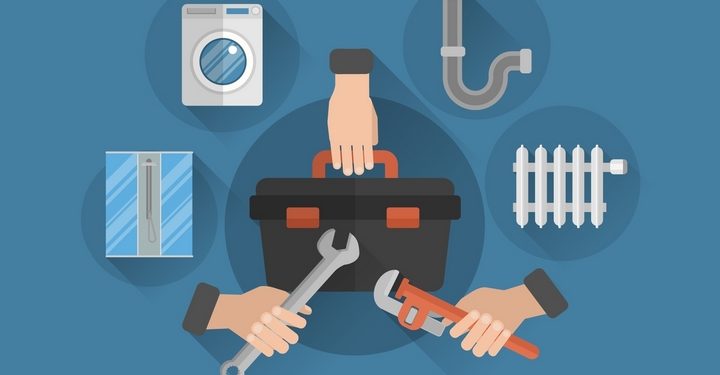4 Most Common Types of Plumbing Problems

It can happen to anyone – something is a little off with your plumbing. Plumbing issues can range from pretty basic leaking problems that can be easily fixed with a wrench to some more serious problems that can actually do some serious damage to your home if left unchecked.
With the more serious issues, don’t be Mr. Do It Yourself, make sure you actually contact a plumber. Trying to tackle serious plumbing complications on your own can make it worse or even cause bodily harm. When there’s something wrong with your plumbing, the first thing you need to do is diagnose the problem. Here are a few common plumbing issues, how to spot them, and a few tips on how to fix them:
1. Leaky Faucets and Dripping Pipes

Leaks most commonly stem from the shower or tub, but they can also originate from any water source. If you find water stains in your walls, by your wooden floors, or on your ceilings, you will want to investigate further. If your vinyl or laminate bathroom or bathroom tile floor starts lifting upwards, that’s another sign.
Damaged paint, mold spots, and standing water spots or puddles near water sources. This can be fixed with caulking the frames of your shower, tightening connections and compression nuts, and sealing other leak sources with a waterproof sealant. If the issue is a bit more serious (corrosion along a pipeline or connection, for example), it might be time to call in the experts.
2. Low Water Pressure
If your water isn’t giving the force it should be, you will need to identify which rooms are affected by the pressure change. This means checking all bedrooms, the kitchen, and anywhere else that has a water source. Once you have narrowed down the problem areas, try both the hot and cold water faucets.
If only the hot water has a lower pressure, the issue is likely stemming from your water heater. If the problem only affects one room or area, the problem might be a clogged pipe. You will have to remove the blockage from the pipe or the aerator. If taking out these blockages doesn’t work, then it might be an overall problem that requires a professional.
3. Running Toilet
That insufferable sound won’t seem to stop since you’ve last flushed the toilet. You can start to look into the problem by turning off the water draining the toilet of water. Flapper issues are the most common problems when diagnosing toilet running problems. It can also be an issue of the draw chain not properly connecting, either because it is too long or too short. If the problem is more complicated than your plumbing skills, it might be time to call the plumber.
4. Drain Blockage
When your water isn’t draining as well as it should be, it might just be an annoying clogged drain. There are a few quick fixes, like pouring boiling water down the drain, using a combination of vinegar and baking soda to pour into the drain (wait for 10 to 15 minutes before washing it away), a bent wire hanger can pull the blockage out, or when all else fails, a drain snake.





